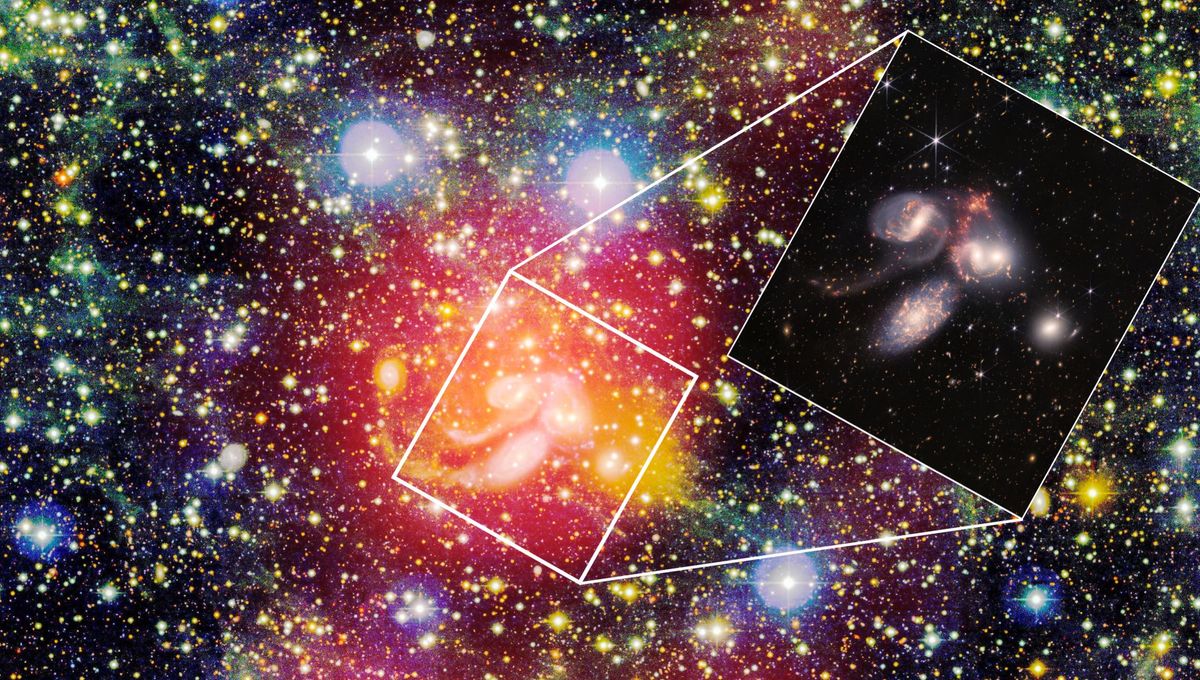
The more you look, the more you find. And that includes record-breaking intergalactic structures. The famous Stephan’s quintet is a group of galaxies was first discovered in 1877 and it continues to hold fascination. It was one of the first targets of JWST’s science mission. Now, FAST, the Five-hundred-meter Aperture Spherical Telescope, has revealed even more: the largest known atomic gas structure around a group of galaxies.
The structure spans over 2 million light-years, a remarkable distance considering that’s almost how far the Andromeda galaxy is from our own, the Milky Way. And talking about our galaxy, around 20 Milky Ways would fit side by side in this extremely low-density cloud.
“This is the largest atomic gas structure ever found around a galaxy group,” research lead XU Cong, from the National Astronomical Observatories of the Chinese Academy of Sciences, said in a statement.
The incredible capabilities of FAST allowed for the observation of this structure.
Atomic hydrogen gas is the key to the formation of all stars. It can be thrown out of galaxies pretty easily, especially during merging events. In the case, of Stephan’s quintet, we are looking at four of the five galaxies colliding at the same time (the fifth just appears close by). The main group is located 290 million light-years away from Earth.
These interactions are very messy. The fundamental structures of the galaxies can be radically changed and their supermassive black holes can also enter a feeding frenzy state. JWST was able to track several interesting chemicals including sulfur and oxygen around one of the galaxies’ supermassive black holes. And the gas is also thrown out, spreading in intergalactic space.
The Chinese radio telescope allowed the researchers to discern the spread of this gas for the first time, showing that the structure is much larger than anyone might have expected. It also revealed another surprise: the gas structure has probably existed for about one billion years, which challenges the current understanding of galaxy evolution.
The low-density atomic gas that makes this structure is not expected to survive ionization – the removal of the hydrogen’s electron – by the intergalactic ultraviolet background on such a long timescale. The complexity of galaxy formation and evolution is slowly becoming clearer but a lot remains to be understood.
The findings are published in Nature.
Source Link: Largest Atomic Gas Structure Around Galaxy Group Discovered By Chinese Telescope